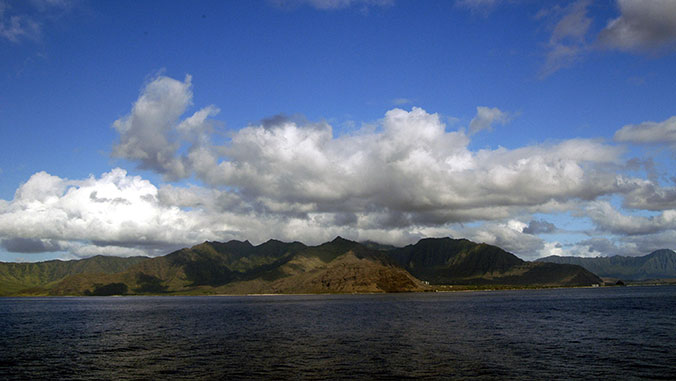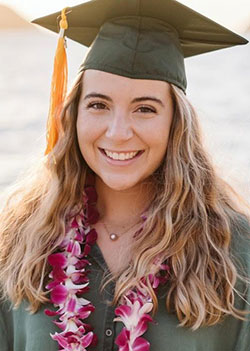
For as long as she can remember, University of Hawaiʻi at Mānoa undergraduate student Kayla White knew she would become a scientist.
“I have always been fascinated by the natural beauty of the planet and the biology that inhabits it, including us, and how everything on the planet is related,” said White.
After learning how interconnected all of Earth’s systems are and learning about the climate system as a whole, White became particularly interested in humans’ impact on the atmosphere, ocean, terrestrial environment and climate. This led her to the Global Environmental Science (GES) program in UH Mānoa’s Department of Oceanography, School of Ocean and Earth Science and Technology (SOEST).

For her GES senior thesis research, White worked with SOEST atmospheric sciences assistant professor Giuseppe Torri to develop a computer model of clouds so they could simulate the effects of climate change on cloud formations. Specifically, they assessed how changing the sea surface temperature around a flat or mountainous island would impact clouds and subsequent rain.
“We found that as sea surface temperature increases, rainfall rate and cloud formations increase, and increase the most in the middle of the islands,” said White, who is from Dallas, Texas and graduated in May with a bachelor of science from the GES program. “Furthermore, with warmer sea surface temperatures, rainfall lasts later into the evening and night time than before. This shows that with increasing sea surface temperatures due to climate change, large islands in the Maritime Continent, and more generally, across the Pacific, could see increased rainfall and clouds that last longer.”
“All of us in GES and SOEST are very proud of Kayla’s accomplishments while at UH Mānoa and we look forward to seeing her contributions during graduate school and beyond,” said Michael Guidry, chair of the GES program.
This work is an example of UH Mānoa’s goal of Excellence in Research: Advancing the Research and Creative Work Enterprise (PDF) and Enhancing Student Success (PDF), two of four goals identified in the 2015–25 Strategic Plan (PDF), updated in December 2020.
For more information, see SOEST’s website.
–By Marcie Grabowski

